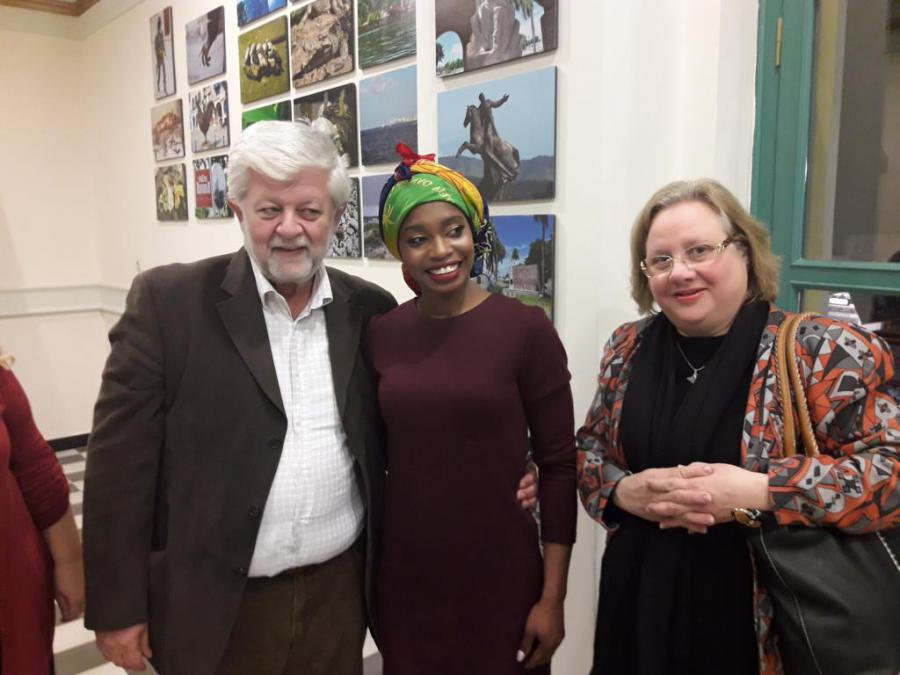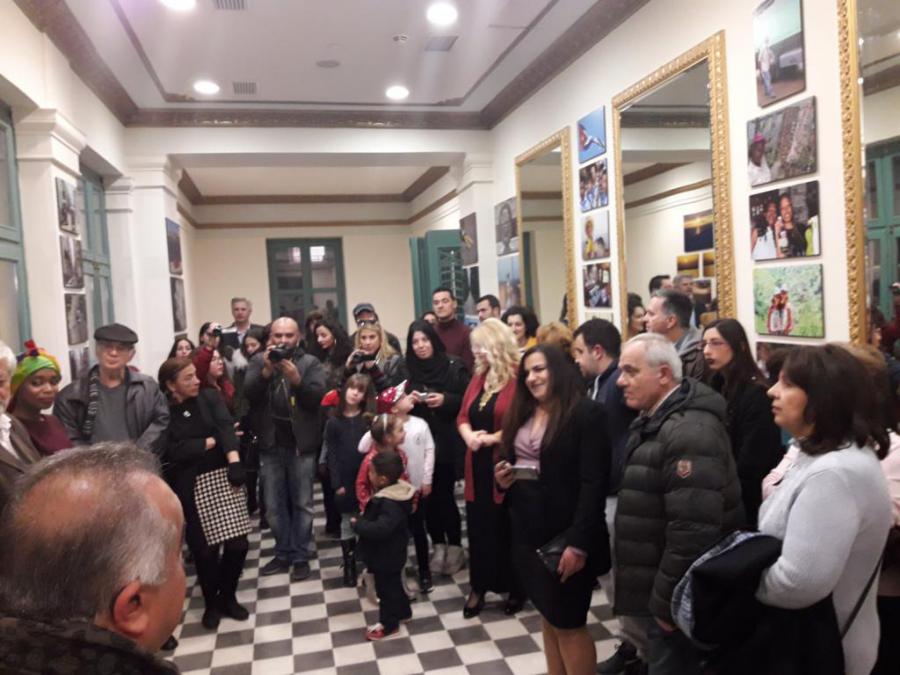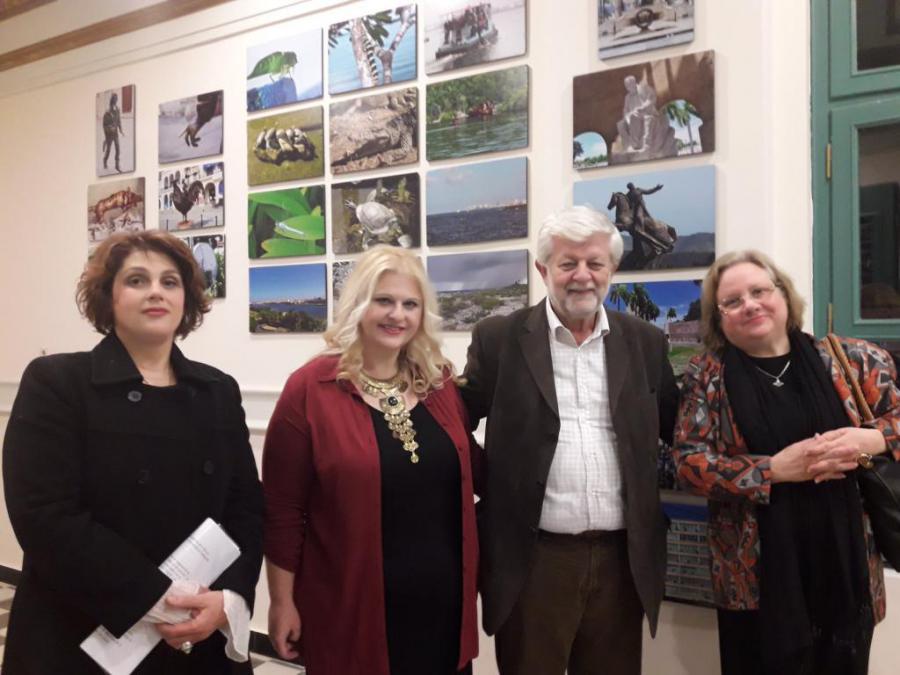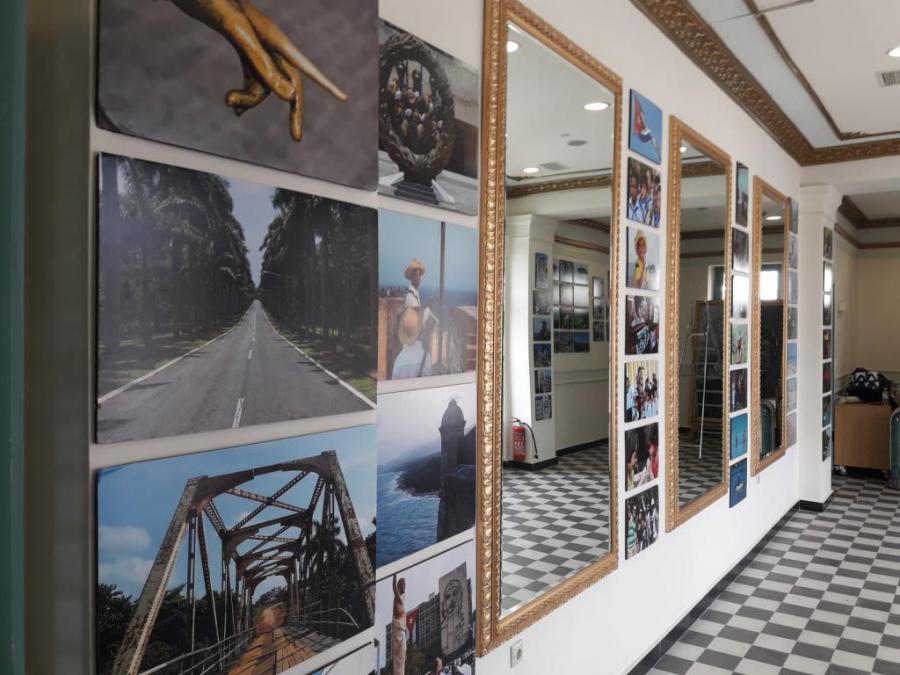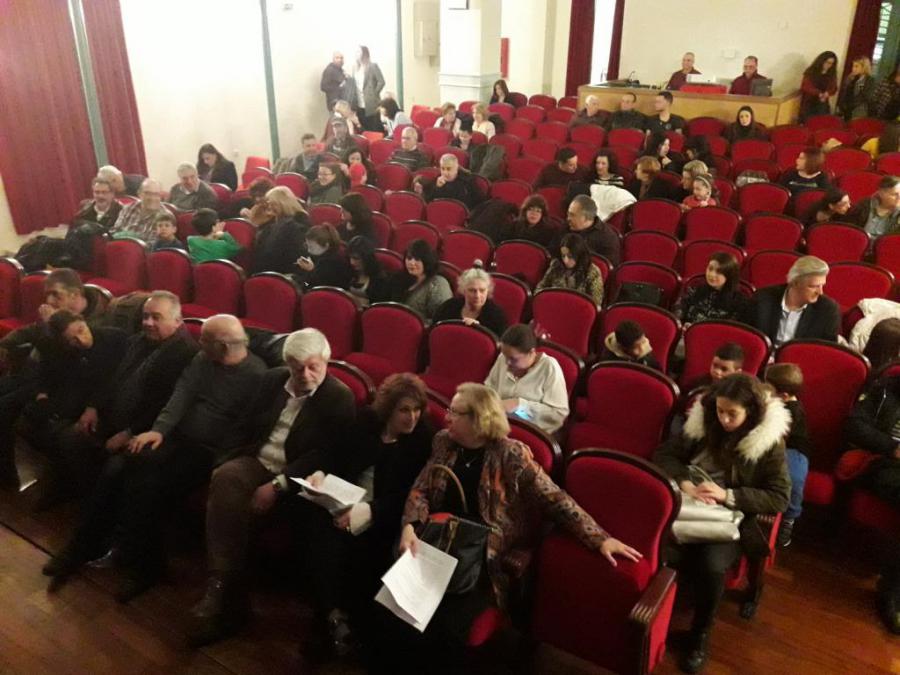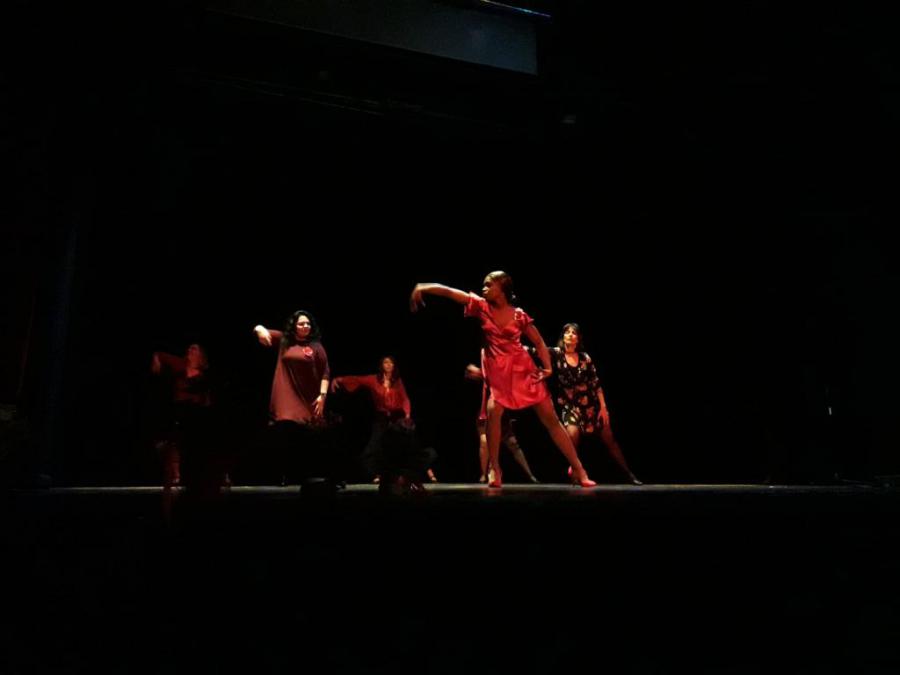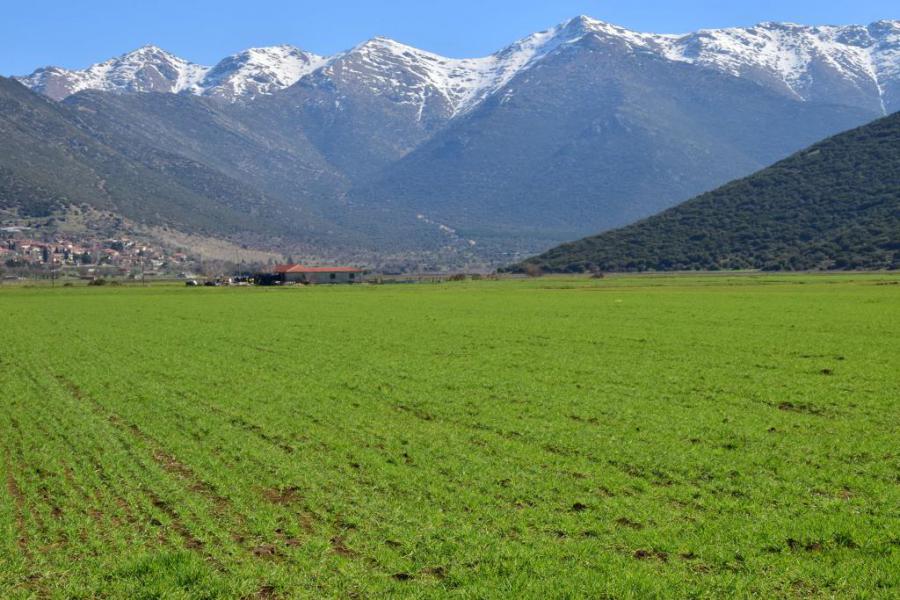(Taken from Facebook Oriol Marrero, counselor of the Embassy of Cuba in Greece) Part XI. Photographic exhibition “With Cuba in the heart”. Tripoli city, Arcadia region, Greece. 4th March 2019. THE CURRENT city of Tripoli is the capital of the peripheral unit of Arcadia on the Peloponnese peninsula. Arcadia is one of the most important archaeological regions in all of Greece, whose geography is 80% covered by mountains. It would not be an exaggeration to say that Arcadia is very mountainous, however, it has exceptional valleys, as in Thessaly which has Olympus and also a wide and productive valley. THE CUBAN APOSTLE spoke of mountains and also Greek valleys. Of islands, of seas … of theaters. Always brotherly, never uncritical. He spoke with admiration about the particular beauty of the valleys of Arcadia, which were among his favorites in the world. Everything indicates that he was able to see numerous paintings of these, as he described them as if he had seen them personally, further proof of his perceptual and artistic acuity. Which paintings and plastic works Martí saw about Greece, and where, is another matter. THE COLORFUL and metaphorical references by José Martí about Arcadia gave a unique vibe to the assembly and development of the Cuban expo in Tripoli, since these exhibitions contain an enriching two-way bridge: towards Greece, and also towards Cuba. From Martí. And towards the understanding of Martí, in the correlation Cuba-Greece, Greek People-Cuban people. Perhaps these texts do not manage to transfer it because it is difficult to transfer the subjective, but when exchanges with people occurs in front of images and texts that vibe is felt. And at that point, let’s let Martí work. Also Heredia, and not a few Cuban compatriots who loved culture, and independence, art, and also freedom from every occupying boot. It can never be forgotten, neither then nor today, that Martí, the greatest and most universal of those who have seen the sun in Cuba, died a soldier, in combat against a foreign power, when he was only 42 years old. IN THIS CASE it was Tripoli, to a certain extent the cradle of the Revolution. That is why the exhibition “With Cuba in the heart” inaugurated on March 4, 2019 there would have additional connotations, since Arcadia and specifically Tripoli were the scene of the first and violent combats in the Greek revolution of 1821. In this region and city the rebels Greeks under Theodoro Kolokotronis achieved significant military victories. THE LIBERATION of the city of Tripoli on September 23, 1821 was the beginning of the liberation of the Arcadia region, and constituted a great victory in Greece’s struggle for national independence against the Ottoman Empire, the same as on March 25 2021 celebrated the 200th anniversary in Syntagma Square, across the country, and not only. THE MOTTO of the Greek revolution of 1821 written in the stone and in the bronze was clear: “Freedom or death”: “ελευθερία ή θάνατος” (elefthería í thánatos). This was proclaimed by Archbishop Paleon Patron Germanos in Agia Lavria, Peloponnese, on March 25, 1821. It is not necessary to repeat. WHILE Greek television broadcast the parade of March 25, 2021 for the 200th anniversary of national independence, the association instantly emerged, because just below the square where the parade was passing, in the central Syntagma metro station, there was a modest Cuban tribute to the brotherly Greek people, in the heart of Ancient Greece: the expo “José Martí: with Greece in the heart”. The same happened when seeing the Acropolis during the parade, below which, in the Acropolis metro station, the second part of this photographic exhibition is shown with texts and photos associated with the Cuban National Hero and his vision of Greece, saluting the 200 anniversary of its independence from the Ottoman Empire. This exhibition was inaugurated on March 13, 2020. And it is still exhibited a year later. Repeated thanks to the authorities of the Athens Metro. WE GO BACK to Arcadia. THE INHABITANTS of Arcadia are considered by Herodotus among the oldest in the Peloponnese. And according to Homer –in the Iliad–, they contributed sixty ships to the Trojan War. Precisely the Greek personality most quoted by Martí – which is Homer, whom he mentions in his Works more than sixty times – speaks of “those who occupied Arcadia”, in the Catalog of Ships of the Iliad: “And those who occupied Arcadia,” says Homer, “under the steep Mount Cilena, and next to the tomb of Épito, where there are men who fight hand to hand; and those that inhabited Féneo and Orcómeno the rich in cattle, Ripa and Stratia and the windy Enispa, and occupied Tegea and the amiable Mantinea, and Stymphalus occupied and inhabited Parrasia; the mighty Agapénor, the son of Anceus, was chief of them, and there were a total of sixty ships; and numerous Arcadian males in each one of them embarked, in expert warfare. Well, to Agamemnon himself, the leader of warriors, the son of Atreus, he gave them the naos with well-supplied benches, to cross the wine-colored sea, since the work of the sea did not interest them before or now ”. ARCADIA penetrated deeply into the work of Virgilio, Jacopo Sannazaro, Garcilaso de la Vega, Miguel de Cervantes, Lope de Vega, Philip Siney, Nicolas Poussin and Friedrich Schiller. And, although little is said about it: Arcadia also penetrated deeply into the work of José Martí. As the example of resistance of the Greek patriots in the sacred city of Missolonghi during the sieges of the Ottoman Empire, or the Greek resistance to the Persian invasion in the Second Medical War during the Battle of Hot Gates, with the particularity that Martí, Besides being a writer, journalist, translator, poet, he organized a war for the independence of his homeland. AS artists, Missolonghi penetrated as deeply in Delacroix as in Martí. Marti’s oath in referring to the Greek patriot in Missolonghi is no less expressive than the intense and grandiose picture that Delacroix paints. Arcadia penetrated Virgilio as deeply as it did in Martí. Virgilio’s Bucólicas: Martí’s descriptions of “Arcadia”. MARTÍ surely read the passages from the Iliad about Arcadia. He for sure visited painting exhibitions where works that reflected the nature of Arcadia were displayed. FOR Marti’s sensitivity and artistic greatness, Arcadia was that kind of aesthetic greenery, a paradise of color, an imaginary country, chromatically incomparable and peaceful, idyllic, pastoral, the object of a creation as legendary and aesthetically paradigmatic as mythological, where nothing would have to discover beyond the eternal, exclusive, charming and unrepeatable nature, whose tones and contrasts colored the poetry and literature of a classical era. Zaragoza (aged 17 or 18). This region appears among the first five sites in Greece most referred to in his written work. He had the courage to try everything with Arcadia: he did it in prose, in verse, in novels, in poetry, in journalism and in translations, on purpose and as is known, without being able to know her personally. But Martí’s descriptions of the valleys of Arcadia are astonishing. His phrase: “if the valleys, Arcadia”, could have been one of the last Martian references in verse about Greece, if not the last. IN a fraternal meeting with the mayor of the city of Tripoli, Mr. Dimitrios Pavlis, it was spoken about Martí’s literary and journalistic references to Arcadia, which was listened attentively, not without a mixture of gratitude and amazement. THE Cuban exhibition was inaugurated with a notable attendance of the public at the renowned Municipal Theater of Tripoli, Arcadia. It would be the ninth exhibition exhibited since June 2018. Before that it had been presented in Manama, Athens, Lefkada, Tríkala, in the Thiba high security prison for women, in Kalamata, Lárissa, Tripoli and now in Tripoli. The mayor of the city, Mr. Dimitrios Pavlis, attended the opening and delivered emotional words of welcome, as well as the Cuban Ambassador to Greece, Zelmys María Domínuez Cortina. Then the author of the exhibition briefly explained to those present about its content, and heartily thanked the warm and massive reception they gave to this Cuban exhibition, the first to be held in the city. And he commented on the links of José Martí, Cuban National Hero, with Arcadia. ANOTHER beautiful and symbolic moment was constituted by the fact that a Cuban compatriot living in the city of Tripoli, Tahimy Tahimy, organized an entertaining cultural presentation at the Municipal Theater, dedicated to the visitors of the show, in which Greek citizen artists from various ages living in the city, who interpreted Cuban and Latin American themes under the leadership and active participation of compatriot Tahimy. IT WAS an important cultural event for the city of Tripoli and for all the participants, according to the press, a sign that Cuba is a sponsor of world solidarity and humanism, respect for life and friendship, promoter of peace and cultural encounters between peoples. THANKS to the friends for their reading and interaction. THE XII installment will deal with the expo in the city of Hiraklio –Hércules– capital of the island of Crete, the largest island in Greece, fifth in the Mediterranean Sea and the cradle of the Minoan civilization. IN images: expo “With Cuba in the heart” in the city of Tripoli, and valleys of Arcadia.
Stay Connected
Must Read
Related News
